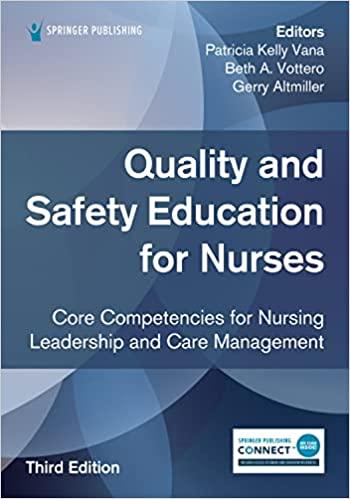Kim is a charge nurse on an inpatient general-surgical unit and recently learned at a conference that
Question:
Kim is a charge nurse on an inpatient general-surgical unit and recently learned at a conference that healthcare-associated infections (HAIs) are significant in the acute care setting and affect hundreds of thousands of patients annually. In addition to the burden/risk placed on the patient, these kinds of infections are associated with high costs. One of these HAIs is catheter-associated urinary tract infection (CAUTI). From the knowledge gained at the conference, she realized her unit often had inappropriate use of urinary catheters following surgery; from checking with other nurses at the hospital, she found the practices within the hospital varied widely. She therefore found risk for CAUTI was a problem in her unit and the hospital at large.
When she voiced her concern to her unit manager, Kim was invited to the next leadership meeting, where she presented what she learned at the conference to the committee. In this same meeting, the hospital chief nursing officer shared that the hospital had just received new Centers for Medicare and Medicaid Services (CMS) guidelines, where the hospital would no longer be reimbursed for preventable HAIs such as CAUTI, since research suggests these are highly preventable. Kim and the head of infectious disease (ID), Dr. Hopkins, were then tasked with formulating an interprofessional team to help address this problem.
1.
Which professionals should be represented on the interprofessional team?
2.
What are some reasons these team members would be either for or against any practice change?
Step by Step Answer:

Quality And Safety Education For Nurses Core Competencies For Nursing Leadership And Care Management
ISBN: 9780826161444
3rd Edition
Authors: Patricia Kelly Vana, Beth A. Vottero, Gerry Altmiller






